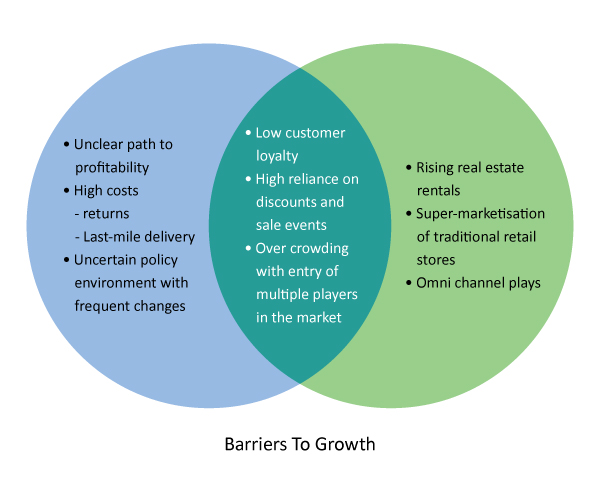Screenplay to customer experience: Have you done it right?
Screenplay to Customer Experience: Have You Done it Right?

We all know how to measure your Net Promoter Score® and also know how to improve it over time. Improving touchpoints in parts often leads to an uneven customer journey mapping and thus you would often find yourself going back to the drawing board to strategize the customer journey.
The best brands across the worlds have one thing in common. They often weave a story around their combined touchpoints to ensure that they stay contextual and relevant to the customers. Treat your customers as though they are a part of a musical and you as a brand are directing the storyboard. The end result? When a customer looks back at the entire journey they’ve had with you, no matter how small, they remember it as a beautiful experience. This may be feasible in a one-off case but how can you scale this at large to ensure that this story becomes the association factor for your C2B channel?
A report by A.T. Kearney mentions that “Customer Experience will evolve to become a vital element for capturing mind share and market share” With an 11% contribution to the country’s GDP and a promising growth rate of 12%, retail will continue to fuel the economy. Within the industry, however, growth will not be so straightforward. Discerning and demanding customers, the adoption of technology, and the entry of more players-both traditional and new age-will require incumbents to do much more than they have done so far. Getting product, pricing, and convenience right will become the norm, but customer experience will become the key differentiator-driving customer acquisition, retention, and lifetime value enhancement.

Here are 7 steps to create superior customer experiences:
1. Relevance Via Curated Offerings
When it comes to delivering a superior experience, less is more. Retailers need to balance curation and choice.
When it comes to product assortment, many retailers are tempted to offer more choices. However, studies have shown that too many choices can be detrimental to a sales-a concept called the paradox of choice. Too many choices can confuse consumers leading to a fear of making the wrong choice or missing out on a better option, thereby reducing satisfaction. Thus, increasing the number of options isn’t always better for consumers or for retailers, Forward-thinking retailers focus on getting the balance right with smaller curated product assortments designed by analyzing consumer preferences across segments.
2. Engagement
Retailers need to engage consumers with interactive offerings.
Using advanced technologies to encourage consumers to interact with a brand can elevate engagement and customer experience. Interactive experiences give brands an opportunity to connect with consumers at a deeper level by informing them about the brand history, upcoming products, and related social events. Further, companies need to focus on communicating the product story rather than just the sales story because today’s consumers want to know the origins and components of the products they are buying.
3. Technology-Enabled Stores
To stay relevant with digital-savvy consumers, stores need to embrace emerging technologies.
Technological advancements over the past few years have helped retailers enhance the shopping experience throughout the purchasing journey. Retailers around the world are already adopting an array of emerging technologies, including digital catalogues for selecting products QR codes for product Information, virtual trials, self-service check-out kiosks, and advanced technologies such as augmented reality and virtual reality.
In India, retailers are optimistic about increased adoption of the latest technologies. Traditional retailers need to build the technological and analytical backbone to enable this-either in-house or by partnering with service providers depending on scale, organizational bandwidth, and economics.
4. Omni-channel Strategies
Offering shoppers an Omni-channel experience is no longer a good-to-have option.
Consumers do not think in terms of channels and are demanding omni-channel experiences. From a consumer standpoint, omni-channel is not the same as a retailer simply being present on multiple channels. It means having a seamless experience across channels-throughout the consumer journey.
There are multiple benefits of investing in omni-channel strategies. Our research reveals that 23% of the world’s consumers purchase extra items when picking up an online order from a store, and 20% who return an online purchase in a store make an additional purchase.
To enable omni-channel from an operations standpoint, retailers will need to improve inventory management and accuracy. A consumer may choose a product online, locate the nearest store where it is in stock, and walk in for a purchase. However, if the product is not in stock, the result is poor customer experience. Omni-channel retailers are using technologies such as RFID to improve inventory accuracy and visibility in warehouses.
5. Scalable Personalisation
Personalizing products requires having a deep understanding of consumers. However, retailers need to balance feasibility with customer delight.
Effective personalisation requires developing a granular understanding of consumers by collecting and analysing data related to their personalities and preferences. Marketers will need to adopt consumer segmentation models as complex cohorts emerge and traditional demographics are challenged. As a result, companies need to move down to the individual, use advanced techniques to identify what is common and redefine the view of consumer cohorts.
To make personalisation commercially viable, retailers must balance operational efficiency with consumer demands. Personalisation increases variety makes forecasting difficult, and can significantly increase costs. A lean and agile supply-chain needs to be built that is flexible enough to handle unique products with uncertain demand. Retailers need to leverage analytics, machine learning, and postponement strategies. Success will also depend on collaborating with suppliers and internal coordination between marketing and operations.
Companies should deploy selective personalisation based on analysis of consumer requirements to leverage scale benefits. Selective personalisation involves keeping some standard offerings and topping them off with a few personalized options. The extent of personalisation can range from limited to complete personalisation, including co-creating with customers.
6. Social Spaces
Offline stores need to evolve into places for consumers to gather, fulfilling their need for community experiences.
Today’s consumers want social spaces where they can not only shop but also engage with brands, spend leisure time with friends and family, and indulge in a broader array of activities. To meet these expectations, retail spaces need to transition into social spaces.
Leading retailers around the world are combining product-purchasing opportunities with amenities such as food and beverage, entertainment, recreation, and mobility hubs. Single-category retailers, small-format stores, and stand-alone stores should explore incorporating these activities on a smaller scale, based on what is practical given the store size and rentals. In addition, this trend can provide important input into future site selection and store design.
7. Influencer Marketing
Winning over today’s consumers requires investing in social media and micro-influencers. Retailers need to adjust marketing budgets to reflect the new social media realities optimize the media mix, and tailor spending based on the target group’s media consumption habits.
- Focus on efficiency of media spending, for example by moving from cost per click to cost per conversion.
- Create an agile media organization.
- They also need to engage with micro-influencers to build authentic communities
- Systemize the use of influencers by moving from macro to micro-influencers.
- Seek quality, not quantity, and invest in a focused manner.
- Build long-term ambassadors.
All these imperatives translate into a set of actions for various functions of the retail. For India’s retailers, there’s a lot to do in very little time. Those that remain customer-focused and agile will win the retail game.

